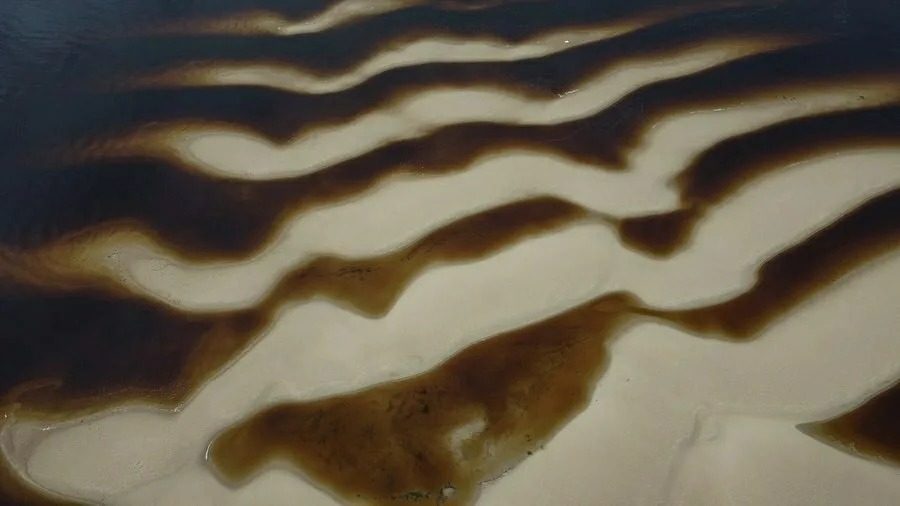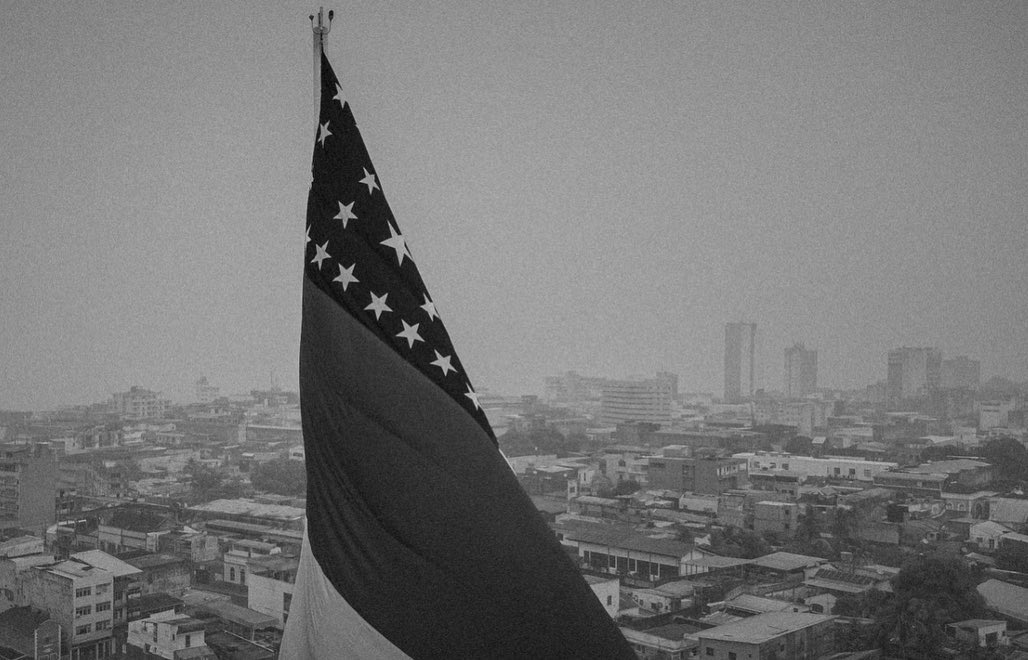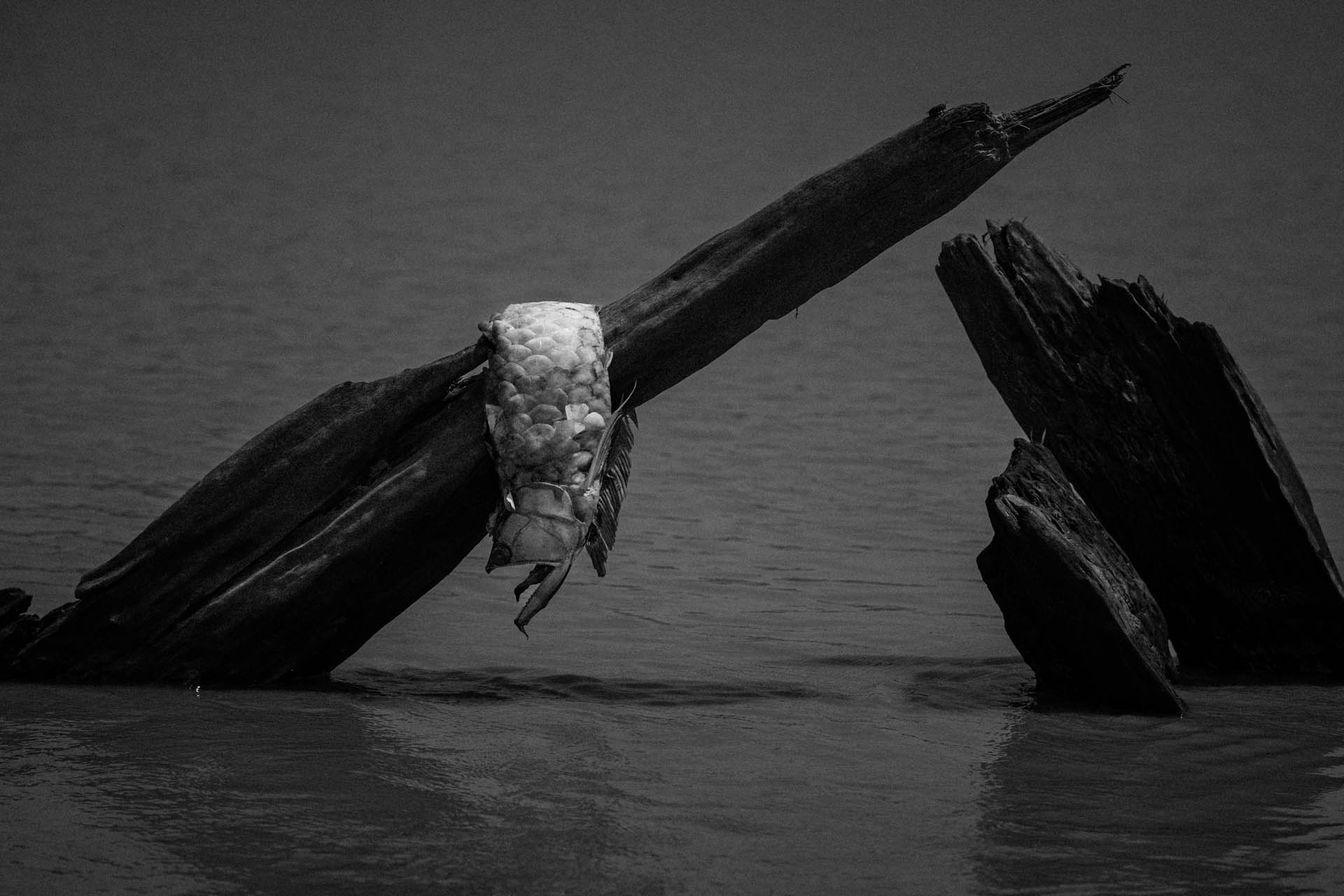The early years – In 1990, I survived my first encounter with the Amazon jungle.
![]()
Manaus, Amazonas, June 1990
The narrow, uneven streets of Manaus are filled with a cacophony of shouts, honking cars, and music. Radios and sound systems blare. Noise is everywhere. The air is hot and humid. The thermometer indicates forty degrees Celsius. We find only one terrace, tucked away on the first floor of a run-down building. Across from it is the Palace of Justice, where the work schedule seems mainly to consist of an eternal siesta of coffee and lunch breaks.
At the agreed time, a not too tall but sturdy man approaches our table and introduces himself. His English and blond hair suggest an American in exile. Marco Lima, however, is a true Brazilian. During our conversation, he often mentions the word “respect”, in relation to both the nature and the inhabitants of the forest. He is clearly the guide we are looking for, and we decide to depart the following day. Our destination is the Anavilhanas Archipelago, a large group of islands in the Rio Negro between Manaus and the northern town of Nova Airão. A dockworkers’ strike the next morning proves no hindrance to our preparations for departure. The boat’s crew, aside from Marco, consists of a small boy with indigenous traits, Coruja, and a Creole named José. They both live on the Lajana, as the boat is named. As José steers the Lajana alongside a floating gas station towards open water, Marco provides us with some details about the area we are heading to, about the igapós, the blackwater-flooded forests in the Amazon biome. The clear black water of the Rio Negro is said to be poor, which is why, for example, there are far fewer insects than in the Amazon. Still, about three hundred different species of fish live in the river. Of these, the pirarucu, which can grow more than three meters long, is the largest. Overfishing threatens the survival of this second largest freshwater fish in the world.
As our boat steadily progresses, Marco points out the lush vegetation along the water, the air roots hanging down in long strands, the many parasites that grow and spread in the most diverse species on host trees. It is a wonderful sight with trees, each of which, due to the many ‘guests’, forms a capricious botanical garden. After a few hours of sailing, we pass some buildings on the shore, a sort of settlement, with an old-fashioned looking well and stairs carved into the coastal wall leading to the water. A leper colony. This is where the outcasts live.
Several hours later, after we have arrived in the area of the islands, we take a small paddle boat on a trip through the flooded forest. Marco points to a large concentration of air bubbles in the water. “Piranhas.” He himself has a few scars from bites, one between his eyes (“the piranha’s kiss”), but argues that it is possible to live with this voracious little fish, as long as you take into account its behavior. There are even periods when the piranha is vegetarian, living off tree fruits that grow close to the water. As evening approaches, we head for a tree standing upright in the middle of the water. Before the boat is secured, we check the branches for snakes. A single lizard is all that moves. It’s already dark. The hammocks are rolled out and hung up. It’s eight o’clock. Just as I fall asleep, I’m woken by the rain clattering on the upper deck. Huge flashes light up the surroundings in a ghostly light. While Marco and the two boys secure tarpaulins and steer the boat closer to the shore, I enjoy an unforgettable spectacle.
The next day promises to be beautiful, but it will bring a confrontation that will abruptly end our trip.
Chased by the devil
In the sky above us, several hawks hover, searching for prey. Chattering parrots flutter like bright green spots between trees, from which the roar of a group of monkeys sometimes echoes. After breakfast, we prepare to go fishing for piranhas in the dense vegetation of the islands with a small paddleboat. It takes some effort to navigate into the forest. A floating log occasionally obstructs our path. We have to use all our strength to pull the boat over it. In a relatively open spot, we bang the water with sticks that serve as fishing rods, to lure the notorious predatory fish. When the creatures haven’t bitten after ten minutes, we decide to sail a bit further.
While Marco steers the boat with the paddle through the forest, I open my camera to change the film. A sweet smell enters my nostrils, and suddenly I sense a pervasive hum near my ears and feel something crawling on my head. A sting and another, and I drop the film and camera into the water. For a moment, I think I’m the only one being attacked, but then I hear José screaming behind me: “BEES!” The pests are everywhere, in our hair and our clothes. My shirt seems to be on fire. I flail wildly around me. I look back and see José in the water. “Piranhas,” it flashes through my mind. “Caimans.” “On board,” Marco yells to José. He struggles to get out of the water. His leg is bleeding. After several futile attempts to start the outboard engine, it finally roars to life. We blaze our way through the dense vegetation as if the devil himself is on our tail, in the guise of a dark cloud of stinging insects with a singular goal.
When the forest spits us out onto the open river, the bees leave us alone. The boat’s floor is strewn with small brown bodies, smacked dead, drowned. A severe attack, according to Marco, but we should still be grateful it wasn’t white bees. José, however, looks incredibly glum. In contrast to the thirty, forty stings each of us have received, his back resembles a red, swollen pin cushion.
Back on the Lajana, we tend to each other, removing stings. My head feels as if it’s been clamped in a too-tight German steel helmet. We decide to sail to a lodge nearby to buy some soft drinks. As we arrive at a large wooden building built on stilts in the water, Marco is greeted by a large monkey. They shake hands and seem to confer briefly. Then the monkey looks at us. Suddenly, his kin, of all sorts and sizes, swarm in the trees. One after another, they boldly jump on the boat. Hammocks are used as trampolines, and at one point, I just manage to save a few clothes before a particularly grumpy specimen disappears into the forest with them. After the colony is removed from the boat with some difficulty and we’ve bought refreshments, we sail on.
In the meantime, José has become even quieter than usual. His footsole has some poisonous needles from the palm tree he landed on when he jumped into the water earlier. When he complains about pain in his ear canal, Marco fishes out a leftover bee with tweezers. An hour later, not only the boat boy but also his boss are hanging over the railing, vomiting. It is decided to return to Manaus. Coruja takes José’s place in the wheelhouse. As if we haven’t experienced enough for one day, the weather suddenly turns, and ominously dark clouds appear in the until-then clear blue sky. Things can get rough on the Rio Negro. The hours-long return trip, at full speed, has an eerie quality, with a crew pale and sprawled out on the deck, while fierce rain lashes the boat, which bucks through the high, whipped-up waves.
![]()
fOCUS Amazônia
Anavilhanas is the second largest river archipelago in the world, with some 400 islands and 60 lakes. It is located on the bed of the Rio Negro in the Brazilian state of Amazonas and includes the municipalities of Manaus, Iranduba and Novo Airão.
The photographer Raphael Alves, from Manaus, recently took a bird’s eye view of the Anavilhanas.
Manaus-based photographer Raphael Alves has been capturing the water cycle in Amazonas since the historic floods of 2009. This has led to series such as ‘Quando as águas’ (When the waters) and ‘Riversick’, as well as participation in the travelling photographic exhibition ‘Amazônia | Os Extremos’ (Amazônia | The Extremes), an initiative of the independent news agency Amazônia Real.















